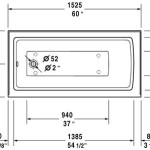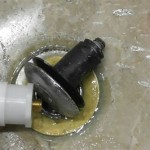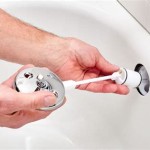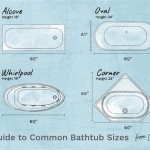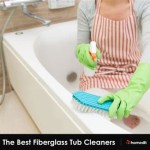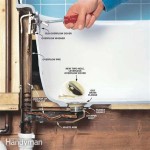Home Remedies to Clean Enamel Bathtubs in Singapore
Maintaining the cleanliness of an enamel bathtub in Singapore presents unique challenges. The warm, humid climate encourages mold and mildew growth, while the city-state's water hardness can lead to stubborn mineral deposits. Harsh chemical cleaners, although effective, can damage the enamel over time, dulling its shine and potentially causing discoloration. Therefore, leveraging readily available home remedies offers a safer, more sustainable approach to keeping your enamel bathtub sparkling clean.
Enamel bathtubs, prized for their durability and classic aesthetic, require gentle yet effective cleaning methods. The enamel coating, typically porcelain fused to cast iron or steel, is relatively resilient but susceptible to damage from abrasive cleaners and harsh chemicals. Understanding the composition of common household stains and the properties of various cleaning agents is crucial for selecting the most appropriate and effective cleaning remedy.
Key Point 1: Understanding Common Stains and Residue in Singaporean Bathrooms
Singaporean bathrooms are prone to specific types of stains and residue. Understanding these common issues is the first step in choosing an effective cleaning method. The most prevalent stains include:
Hard Water Stains: Singapore's water supply, while treated and safe, contains minerals like calcium and magnesium. These minerals precipitate out of the water and deposit on surfaces, leaving behind a chalky white residue known as limescale or hard water stains. These deposits are particularly noticeable around faucets, drains, and along the waterline of the bathtub. The alkaline nature of these deposits necessitates the use of acidic cleaning agents to dissolve them effectively. Regular cleaning prevents the buildup of these stains, making them easier to remove.
Soap Scum: A combination of soap residue, body oils, and hard water minerals forms a sticky, opaque film called soap scum. This film adheres to the bathtub's surface, creating a breeding ground for bacteria and contributing to a dull, unsightly appearance. Soap scum is more difficult to remove than simple hard water stains because it contains both alkaline and greasy components. Therefore, cleaning solutions must be capable of breaking down both types of deposits.
Mold and Mildew: The high humidity levels in Singapore, coupled with the warm temperatures, create an ideal environment for mold and mildew growth. These fungi thrive in damp, poorly ventilated areas, particularly in bathrooms. Mold and mildew manifest as dark, often black, spots or patches on grout, sealant, and the bathtub surface. Addressing mold and mildew promptly is critical for preventing health problems and structural damage to the bathroom. Specialized cleaning agents with antifungal properties are required to eliminate these infestations effectively.
Rust Stains: Although enamel is resistant to rust, metal fixtures like faucets, drains, and showerheads can corrode and leave rust stains on the bathtub surface. These stains are typically reddish-brown in color and can be challenging to remove, especially if they have been present for an extended period. Rust removers containing oxalic acid or other chelating agents are often required to dissolve these stains.
Key Point 2: Effective Home Remedies for Cleaning Enamel Bathtubs
Several readily available household ingredients can be used to create effective and gentle cleaning solutions for enamel bathtubs. These remedies offer a safer alternative to harsh chemical cleaners, minimizing the risk of damage to the enamel surface and reducing exposure to potentially harmful chemicals.
Baking Soda Paste: Baking soda, a mild alkali, is an excellent abrasive cleaner for removing soap scum and general grime. To create a baking soda paste, mix baking soda with a small amount of water until a thick paste forms. Apply the paste to the stained areas of the bathtub and allow it to sit for 15-20 minutes. Then, scrub gently with a soft cloth or sponge and rinse thoroughly with water. For stubborn stains, add a few drops of dish soap to the paste to enhance its cleaning power. The mild abrasive nature of baking soda helps to lift dirt and grime without scratching the enamel surface.
Vinegar Solution: White vinegar, an acidic solution, is effective for dissolving hard water stains and mineral deposits. Dilute white vinegar with an equal amount of water in a spray bottle. Spray the solution onto the stained areas of the bathtub and let it sit for 15-30 minutes. Then, scrub with a soft cloth or sponge and rinse thoroughly with water. For particularly stubborn stains, heat the vinegar solution slightly before applying it to the surface. The acidity of the vinegar breaks down the mineral deposits, making them easier to remove.
Lemon Juice: Lemon juice, another acidic solution, can be used as a natural alternative to white vinegar. The citric acid in lemon juice effectively dissolves hard water stains and leaves a fresh, citrusy scent. Apply lemon juice directly to the stained areas of the bathtub and let it sit for 30 minutes. Then, scrub with a soft cloth or sponge and rinse thoroughly with water. For added cleaning power, combine lemon juice with baking soda to create a fizzing paste that helps to lift dirt and grime. The natural acidity of lemon juice makes it a safe and effective cleaning agent for enamel surfaces.
Hydrogen Peroxide: Hydrogen peroxide is an effective disinfectant and stain remover, particularly for tackling mold and mildew. Dilute hydrogen peroxide with an equal amount of water in a spray bottle. Spray the solution onto the affected areas and let it sit for 10-15 minutes. Then, scrub with a soft brush or sponge and rinse thoroughly with water. For more stubborn mold and mildew stains, create a paste of hydrogen peroxide and baking soda and apply it to the affected areas. The oxidizing properties of hydrogen peroxide help to kill mold and mildew spores and break down stains.
Borax: Borax, a naturally occurring mineral, is a versatile cleaning agent with antifungal and antibacterial properties. To clean an enamel bathtub with borax, sprinkle borax powder liberally over the damp surface of the tub. Let it sit for 30 minutes, then scrub with a damp sponge or cloth. Rinse thoroughly with water. Borax is effective for removing soap scum, hard water stains, and mildew. Its mild abrasive action helps to lift dirt and grime without scratching the enamel surface. Be mindful when using borax, avoid ingestion and prolonged skin contact.
Key Point 3: Preventive Measures and Maintenance for Enamel Bathtubs in Singapore
Preventive measures are crucial for minimizing stain buildup and maintaining the pristine condition of an enamel bathtub. Regular cleaning and proper ventilation can significantly reduce the frequency and intensity of cleaning required.
Regular Cleaning: The most effective way to prevent stains is to clean the bathtub regularly, ideally after each use. Rinse the bathtub thoroughly with warm water to remove soap residue and body oils. Use a soft sponge or cloth to wipe down the surfaces, paying particular attention to areas prone to soap scum and water stains. This simple routine prevents the buildup of stains and makes subsequent cleaning much easier. A quick wipe down after each use can significantly extend the lifespan of the bathtub's finish.
Proper Ventilation: Adequate ventilation is essential for preventing mold and mildew growth. Ensure that the bathroom is well-ventilated by opening windows or using an exhaust fan during and after showers or baths. This helps to reduce humidity levels and create an environment less conducive to fungal growth. Consider installing a dehumidifier in the bathroom if humidity levels remain persistently high. Good ventilation is a cost-effective way to prevent a range of bathroom problems.
Squeegee After Use: Using a squeegee to remove excess water from the bathtub walls and floor after each shower or bath can significantly reduce the formation of hard water stains and soap scum. A squeegee is a simple and inexpensive tool that can make a big difference in maintaining the cleanliness of the bathtub. Focus on wiping down areas where water tends to pool, such as corners and along the waterline.
Use Liquid Soap: Bar soaps often contain talc and other ingredients that contribute to soap scum buildup. Switching to liquid soap can help to reduce the amount of soap scum that accumulates on the bathtub surface. Look for liquid soaps that are specifically formulated to minimize soap scum formation. Consider using shower gels or body washes instead of traditional bar soaps.
Water Softener: For homes with particularly hard water, installing a water softener can significantly reduce the formation of hard water stains throughout the house, including in the bathtub. Water softeners remove minerals like calcium and magnesium from the water, making it less likely to leave behind deposits on surfaces. While water softeners represent a significant investment, they can provide long-term benefits in terms of reduced cleaning effort and improved water quality.
Avoid Abrasive Cleaners and Tools: Abrasive cleaners and tools, such as scouring pads and steel wool, can scratch and damage the enamel surface of the bathtub. Always use soft cloths or sponges when cleaning an enamel bathtub. Avoid using harsh chemical cleaners that contain bleach or ammonia, as these can also damage the enamel over time. Opt for gentle, non-abrasive cleaning solutions instead.
By understanding the types of stains commonly found in Singaporean bathrooms, utilizing effective home remedies, and implementing preventive measures, maintaining a clean and sparkling enamel bathtub can be achieved without resorting to harsh chemicals or damaging abrasive cleaning methods. These methods ensure the longevity and beauty of the bathtub's enamel finish.

Bathtub Cleaning Solutions And Tips Diy Easy Steps

Bathtub Cleaning Solutions And Tips Diy Easy Steps

Bathtub Cleaning Solutions And Tips Diy Easy Steps

Bathtub Cleaning Solutions And Tips Diy Easy Steps

7 Tips To Keep Your Bathtub Looking New

Bathtub Cleaning Solutions And Tips Diy Easy Steps

Revive Your Bathtub Professional Repair And Repainting In Singapore

Bathtub Cleaning Solutions And Tips Diy Easy Steps

Revive Your Bathtub Professional Repair And Repainting In Singapore

7 Tips To Keep Your Bathtub Looking New
Related Posts

